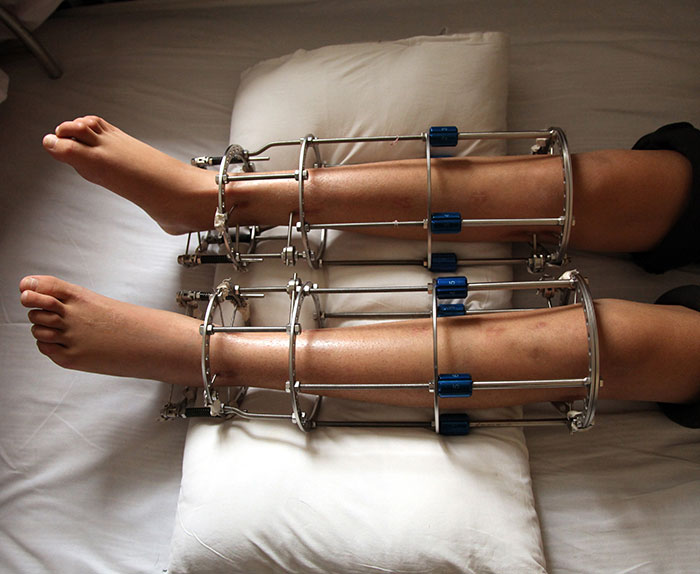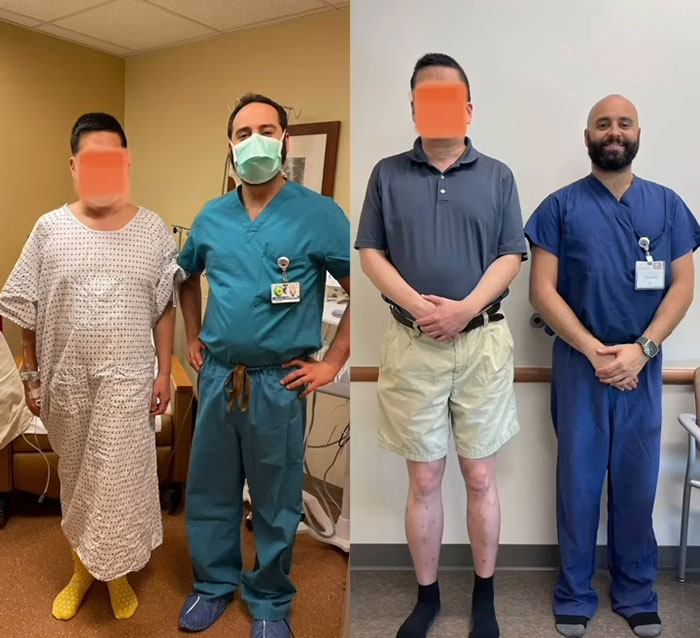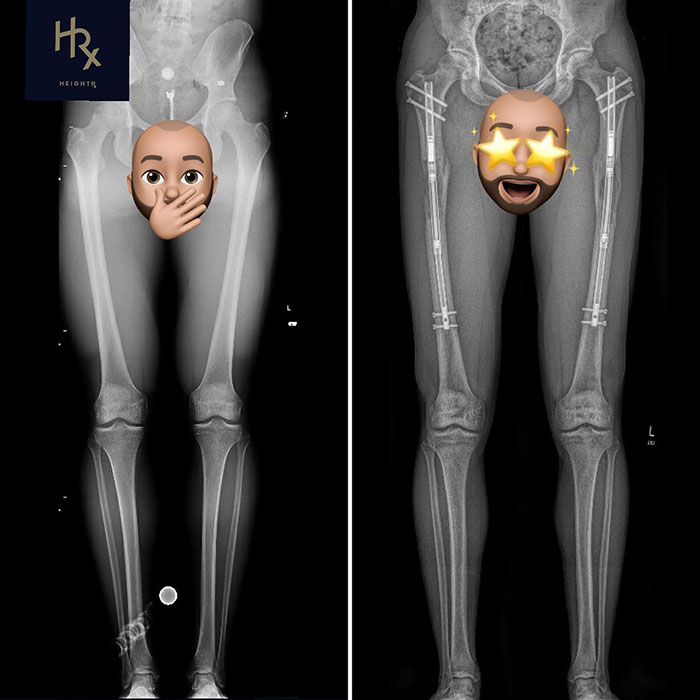German reality TV star Theresia Fischer, who became globally known for undergoing leg-lengthening surgery, has become ill with bone disease as a result of all the operations which included breaking her thigh and shin bones.
The 32-year-old has recently been made to quit a German version of Battle of the Reality Stars due to painful bone infections.
Theresia spent over €150,400 ($162,340) on procedures she underwent between 2016 to 2022, lengthening her height from 1.70 meters to 1.84 meters.
Upon arriving in Thailand to film the fifth season of Battle, which started to air on RTL2 last month, the Germany’s Next Top Model alumni’s physical condition put her participation in the new series in jeopardy.
German reality TV star Theresia Fischer became globally known for undergoing leg-lengthening surgery

Image credits: theresiafischer
Before her appearance on Battle, Theresia was suffering from pain, Blick reported in April.
She told Bunte on April 10: “I had periostitis, I had terrible pain in my left lower leg.
“The periostitis was caused by having so many operations – five on her left leg.”
Periostitis is caused by inflammation of the periosteum, a layer of connective tissue that surrounds bone, UConn Health explains.

Image credits: theresiafischer
The condition is generally chronic and needs to be differentiated from stress fractures or shin splints.
After the operations, during which Theresia’s bones were split and stabilized with metal rods, she suffered from bone infections twice.
The German celeb spent years in surgery and recovery, having opted to increase the length of her legs by 14 centimeters, The Daily Mirror reported on April 11.
She has become ill with bone disease as a result of all the operations, which included breaking her thigh and shin bones

Image credits: theresiafischer
Theresia said she had managed to “stay afloat” with painkillers but she avoided putting too much weight on her most painful leg, the British tabloid reported.
She said that filming reality TV shows had already been challenging, especially when she had to run or move around a set quickly.
The TV star reported said: “When I had to run a little or be faster – it’s just strange to run with metal in your legs.”

Image credits: theresiafischer
Just months ago, she reportedly found out during a health check that the fibula bone in one of her legs had not grown as planned.
Now, Theresia longs for the day when the metal support rods can be removed, saying: “I’m longing for that day when these rods finally come out,” The Daily Mirror reported.
According to the Cleveland Clinic, limb lengthening surgery is a procedure that gradually makes an arm or leg bone longer. This procedure treats skeletal dysplasia, bone growth issues, and bone length differences.
Theresia spent over €150,400 ($162,340) on procedures between 2016 to 2022, lengthening her height from 1.70 meters to 1.84 meters

Image credits: theresiafischer
The surgery itself consists of two main steps: An osteotomy, which means cutting the affected bone into two segments, and attaching a limb lengthening device to the two segments of bone.
The limb lengthening device can be an external fixator: the surgeon attaches a thin, light metal frame to the bones with pins or wires. The frame and most of the device are outside the body.
These devices usually stick out several inches from your body, making it hard to wear certain clothes.

Image credits: Olivier CHOUCHANA/Gamma-Rapho
Many people choose to wear clothing that’s loose or that doesn’t cover the device, such as shorts or short-sleeved shirts.
Or an internal rod: this newer option is a screw-like device that your surgeon places inside the bone. This device isn’t visible outside the body.
Specialists typically separate the bones by a total of one millimeter per day. If the patient has external fixators, the patient or a caregiver turns screws or dials on the fixator to achieve the required daily separation.
Limb lengthening surgery is a procedure that gradually makes an arm or leg bone longer

Image credits: bonelengthening
If the patient has intramedullary nails (magnetic nails), the patient uses a remote control to activate the internal magnet, causing the nail to elongate.
For mechanical nails, adjustments are made through minor non-invasive procedures.
“There are some serious risks,” orthopedic surgeon in the Limb Lengthening and Reconstruction Program at Boston Children’s Hospital Dr. James Kasser said.

Image credits: bonelengthening
He continued: “Limb lengthening puts patients at risk of nerve damage, muscle damage, joint contracture, dislocations, and arthritis.”
Dr. Carley Vuillermin, an orthopedic surgeon in the same program, explained: “Everyone undergoing limb lengthening will have complications.
“It’s a matter of what those complications will be and how quickly we can detect and reverse them.”
“Always love yourself, whatever you are,” a reader commented


























 English (US) ·
English (US) ·